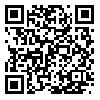Volume 2, Issue 1 And Supplement (Winter 2021)
J Vessel Circ 2021, 2(1 And Supplement): 34-34 |
Back to browse issues page
Download citation:
BibTeX | RIS | EndNote | Medlars | ProCite | Reference Manager | RefWorks
Send citation to:



BibTeX | RIS | EndNote | Medlars | ProCite | Reference Manager | RefWorks
Send citation to:
Fekar Gharamaleki F, Zare P. Feeding and Swallowing Problems after Stroke. J Vessel Circ 2021; 2 (1) :34-34
URL: http://jvessels.muq.ac.ir/article-1-122-en.html
URL: http://jvessels.muq.ac.ir/article-1-122-en.html
1- MSc in Speech Therapy, Lecturer, Department of Speech Therapy, Faculty of Rehabilitation, Tabriz University of Medical Science, Tabriz, Iran
2- MSc in Medical Physiology, Faculty of Medicine, Tabriz University of Medical Science, Tabriz, Iran
2- MSc in Medical Physiology, Faculty of Medicine, Tabriz University of Medical Science, Tabriz, Iran
Abstract: (797 Views)
Background and Aim: Diagnosis and treatment of feedng and swallowing abnormalities at early stage after stroke is important issue in rehabilitation.
Materials and Methods: We conducted a search in PMC, Web of Science, PubMed, Scopus, Medline, SID, Google Scholar and Ovid databases. The present information is available reviewing the articles from 1996 to 2020 through the search of the resources.
Results: feeding or Swallowing is the act of moving food from the oral cavity to the stomach. It is usually considered to be voluntary, but most swallows occur involuntarily in response to saliva production. Swallowing abnormalities or dysphagia occurs in up to half of patients following a stroke and are a common functional impairment of acute stroke, affecting as many as half of all patients, depending on the timing of the assessment, diagnostic methods and criteria and case mix. In most, it is transient with only about 1 in 10 of patients having any swallowing problems at 6 months. Nevertheless, clinical detection of dysphagia may be the more powerful predictor of an increased mortality and morbidity, including pneumonia, water depletion and poor nutrition. Dysphagia is associated with aspiration and associated bronchopulmonary infections, fluid depletion and malnutrition. A number of studies have suggested that dehydration is associated with dysphagia following a stroke. Speech-language pathologists are important members of the stroke patient’s rehabilitation team. SLPs diagnose, assess and ultimately treat disorders related to language, voice, cognition and the ability to swallow, chew.
Conclusion: Speech-language pathologists can help stroke patients relearn to swallow, and use the muscles necessary to move the tongue and esophagus, which also play a role in forming sounds in speech.
Materials and Methods: We conducted a search in PMC, Web of Science, PubMed, Scopus, Medline, SID, Google Scholar and Ovid databases. The present information is available reviewing the articles from 1996 to 2020 through the search of the resources.
Results: feeding or Swallowing is the act of moving food from the oral cavity to the stomach. It is usually considered to be voluntary, but most swallows occur involuntarily in response to saliva production. Swallowing abnormalities or dysphagia occurs in up to half of patients following a stroke and are a common functional impairment of acute stroke, affecting as many as half of all patients, depending on the timing of the assessment, diagnostic methods and criteria and case mix. In most, it is transient with only about 1 in 10 of patients having any swallowing problems at 6 months. Nevertheless, clinical detection of dysphagia may be the more powerful predictor of an increased mortality and morbidity, including pneumonia, water depletion and poor nutrition. Dysphagia is associated with aspiration and associated bronchopulmonary infections, fluid depletion and malnutrition. A number of studies have suggested that dehydration is associated with dysphagia following a stroke. Speech-language pathologists are important members of the stroke patient’s rehabilitation team. SLPs diagnose, assess and ultimately treat disorders related to language, voice, cognition and the ability to swallow, chew.
Conclusion: Speech-language pathologists can help stroke patients relearn to swallow, and use the muscles necessary to move the tongue and esophagus, which also play a role in forming sounds in speech.
Type of Study: Research |
Subject:
stroke
Received: 2021/08/24 | Accepted: 2021/02/28 | Published: 2021/02/28
Received: 2021/08/24 | Accepted: 2021/02/28 | Published: 2021/02/28
Send email to the article author
| Rights and permissions | |
 |
This work is licensed under a Creative Commons Attribution-NonCommercial 4.0 International License. |






